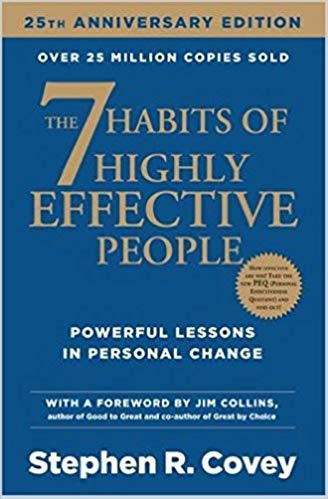

This article is an excerpt from the Shortform summary of "The 7 Habits of Highly Effective People" by Stephen Covey. Shortform has the world's best summaries of books you should be reading.
Like this article? Sign up for a free trial here .
In order to make lasting change in your life, you need to make changes that foster that growth while also eliminating the factors that are limiting growth. Synergy is especially effective at minimizing the negative forces that push back against positive growth.
The Force Field Analysis is an analogy to explain the factors influencing social situations. It was developed by sociologist Kurt Lewin and states there’s an equilibrium between the driving forces and restraining forces of a situation.
In order to achieve an effective action, you should strive to find balance. How can Kurt Lewin’s Force Field Analysis help you understand this space between the forces? Let’s find out.
What is Kurt Lewin’s Force Field Analysis?
Driving forces encourage progress and are typically positive, logical, conscious, reasonable, and economic. Restraining forces restrict growth and change, and are generally negative, illogical, unconscious, emotional, and social or psychological. Kurt Lewin’s Force Field Analysis helped explain how all this comes together.
Imagine you want to create a more positive climate in your family’s home; you feel your children are too competitive among one another, the level of trust between parents and children is lower than you’d like, and everyone has developed some bad habits in their daily interactions. Your positive, logical, conscious desire to improve your family’s culture is a driving force, but that will only get you so far — and most likely the effects will be largely temporary — unless you also work to eliminate some of the negative, emotional, and psychological restraining forces at play. Kurt Lewin’s Force Field Analysis describes both these driving and restraining forces.
The more change you try to create by focusing solely on driving forces, the harder it will become to make progress — like if you were pushing a metal spring back, and the tension kept building until finally the pent-up force of the coils bounce back against you. When you use synergy to tackle a problem, you see differences and challenges as opportunities to create new insights and possibilities, which actually transforms restraining forces into driving forces.
This is where Kurt Lewin’s Force Field Analysis combines with our idea of synergy.
Think about this Force Field Analysis example. A land developer is working on a project that has faced major delays, and the developer has fallen so far behind on his payments that the bank wants to foreclose. In turn, the developer sues the bank to avoid foreclosure. The developer and the bank are caught in a conundrum: The developer needs more money to finish the project so he can get a return and repay the bank, but the bank refuses to lend him any more money until he catches up on his current payments — and all the while, the project is falling further behind.
Tension is high by the time the developer meets with the bank officials, but he approaches the meeting with Habits 4 (Win/Win), 5 (understand the other side before trying to be understood), and 6 (synergy) in mind. The developer writes down all the bank’s concerns, and, seeing his effort, the officials open up and clarify to help him fully understand their perspective. After this process, the officials have been given enough psychological air to be open to listening to the developer’s concerns.
This Force Field Analysis example shows that the mutual understanding both sides gain through Habits 4 and 5 motivated them to turn their shared stress and financial concerns (restraining forces) into a logical, conscious effort (driving force) to find a synergistic solution that benefits everyone. Kurt Lewin’s Force Field Analysis shows that this is the most effective way to understand this solution.
Internal and External Synergy and How They Relate to the Force Field Analysis
Just as you must achieve Private Victories — a proactive paradigm, a principled center, personal leadership, and true independence — before the Public Victory of effective interdependence, you need internal synergy before you can have synergy with other people. How do you have synergy with yourself? What is there to synergize? Are there Force Field Analysis examples you can think of that that demonstrate how you worked through reestraining and driving forces?
Some people let their left brain lead them through life, taking logical approaches to all situations; but sometimes the problems you encounter in life are emotional or creative problems that call for right-brained solutions. Other people lead with their intuitive, creative right brains, but encounter the inverse issue when dealing with analytical and logical problems. Life is a balance of both the logical and the emotional, and you need synergy between both sides of your brain to effectively adapt. Kurt Lewin’s Force Field Analysis helps you understand these competing forces within yourself, and will help you find balance in your solution.
Have you ever had a relationship in which one person is emotionally driven and the other is intellectually driven? What happens when you have an interpersonal conflict? One person tries to express her concerns in feelings, while the other person is asking for concrete examples and evidence of the problem. If both sides of your brain are engaged, you can better understand and respond to the other person, and integrate both emotional and logical aspects in your solution.
Kurt Lewin’s Force Field Analysis explains the balance we find in solutions. There will always be restraining forces in life, and through our driving forces, we can work toward both internal and external synergy in order to find solutions.
———End of Preview———

Like what you just read? Read the rest of the world's best summary of "The 7 Habits of Highly Effective People" at Shortform . Learn the book's critical concepts in 20 minutes or less .
Here's what you'll find in our full The 7 Habits of Highly Effective People summary :
- How to prioritize the hundred tasks you have to focus on the one or two that really matter
- The right way to resolve every disagreement and argument
- How to avoid burning out and succeed over 20+ years






